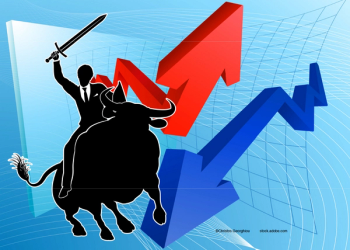
Why market timing cannot beat a disciplined strategy
If investors are not in the market when it begins to move up again, they may miss a large gain. It is virtually impossible to accurately enter at the top or bottom of the market, especially consistently.
Money Matters By John J. Grande, CFP; Traudy Grande, CFP; and John S. Grande, CFP
Whether the news affecting the stock markets came from overseas economic issues, speeches by the Federal Reserve Bank, political unrest in the Middle East, decline in oil prices, or home-grown economic reports, investors are left unsure of just what to do.
Many investors-just out of fear-are contemplating or have exited the stock market, in part or completely. Pulling out of the stock market and waiting to re-enter it is called market timing. The term is a strategic investment theory to predict future market movements that investors use to time their buying and selling decisions.
It is understandable that when markets are high, one would think of selling out at the top. Conversely, when markets are low, fear can persuade an investor to get out of the markets with the idea that stocks were heading lower–and perhaps on the way back up, they will re-enter the market again.
The problem with this strategy is that investors usually guess wrong because of either fear or greed being the catalyst for their move. When this is done and an investor guesses wrong, the cost of missing out on the upward market moves, or the best market days, can make a huge difference in their returns.
A widely cited study, called DALBAR’s Quantitative Analysis of Investor Behavior, compares investors’ average annual returns to market returns. The latest DALBAR study shows that over the 30 years that ended Dec. 31, 2014, the average equity investor earned 3.79%, while the market returns averaged 11.06% during the same period. The rational for this difference in returns is that the average investor timing the market incorrectly.
Look at the chart below. When investors miss just a few of the up days, the days the market turns around and retraces some of its decline will have a significant impact on an investor’s long-term returns.
Average investors miss out on performance in part because their money tends to come in near the top and come out at the bottom. When studying the stock markets back to the Great Depression in the 1930s, corrections are a normal part of market cycles and periods of high growth often occur very close to major pullbacks.
If investors are not in the market when it begins to move up again, they may miss a large gain. It is virtually impossible to accurately enter at the top or bottom of the market, especially consistently.
Our recommendation is to have a well-thought-out investment plan and stay the course. Naturally, there will be some shifting of asset classes and rebalancing of the portfolio, but we strongly suggest that investors stay the course.
What is more important than market timing is spending proper amount of time in the market. Having a disciplined investment strategy outlined in a well-defined Investment Policy Statement–with just the right risk and exposure to equities to meet an investor’s goals–this strategy is more effective than making emotional decisions.
Research and long experience have demonstrated that successful investing requires discipline and patient execution of a long-term strategy. In light of this year’s initial stock market decline, it is tempting to sell and head for the sidelines.
Actually, a contrarian approach might be better if an investor has cash available that is earmarked for the market, and getting in now rather than coming out of the market would be a better strategy.
John J., John S, and Traudy F. Grande, CFPs, are the editors of the Money Matters column. They are owners and principals of Grande Financial Services Inc., Oakhurst, NJ, (website:
The views expressed in the Money Matters column are the views of Grande Financial Services, and should not be considered as investment advice. Grande Financial Services does not provide tax or legal advice. All information is believed to be from reliable sources, however, Grande Financial Services make no representation as to its completeness or accuracy. Past performance does not guarantee future results. Investing involves risk including the potential loss of principal.
Wells Fargo Advisors Financial Network, LLC, Member SIPC, is a registered broker-dealer and a separate non-bank affiliate of Wells Fargo & Company. Stocks offer long-term growth potential, but may fluctuate more and provide less current income than other investments. An investment in the stock market should be made with an understanding of the risks associated with common stocks, including market fluctuations.
Investment products and services are offered through Wells Fargo Advisors Financial Network, LLC (WFAFN), Member SIPC. Grande Financial Services, Inc. is a separate entity from WFAFN.
Newsletter
Don’t miss out—get Ophthalmology Times updates on the latest clinical advancements and expert interviews, straight to your inbox.













































.png)


